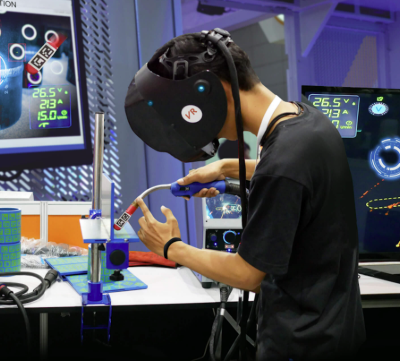Technology and educational innovation have created powerful tools to support students with disabilities, making learning environments more inclusive, accessible, and effective. These innovations not only remove physical and cognitive barriers but also empower learners to participate fully in their education. Here are key ways innovation is helping students with disabilities achieve better learning outcomes:
- Assistive Technology for Access
From screen readers and magnifiers to speech-to-text tools and alternative input devices, assistive technology allows students with visual, auditory, motor, or cognitive challenges to engage with content in ways that suit their abilities. These tools are now more affordable and widely available. - Text-to-Speech and Speech Recognition
Software like Read&Write and Dragon NaturallySpeaking enables students with reading or writing difficulties to listen to text read aloud or speak their thoughts instead of typing. This boosts independence and comprehension across subjects. - Customized Learning Platforms
Adaptive learning platforms adjust content difficulty and presentation style based on student performance. This supports personalized learning for students who may need more time or different formats to process information. - Visual and Interactive Content
Students with processing or attention-related challenges benefit from visual schedules, interactive lessons, and multimedia content. Tools like virtual manipulatives or diagram-based apps simplify abstract concepts. - Augmented and Virtual Reality (AR/VR)
AR and VR provide immersive experiences that can support social skills, spatial reasoning, and hands-on learning for students with autism, ADHD, or other learning differences. These technologies also allow safe simulations of real-world scenarios. - Closed Captioning and Subtitles
Video content that includes closed captioning supports students with hearing impairments and those who benefit from multimodal learning approaches. Automatic captioning tools make educational media more inclusive. - Digital Note-Taking Tools
Apps like OneNote and Notability help students with fine motor skill challenges or executive functioning issues organize their thoughts, record audio notes, and visually map their ideas. - Real-Time Communication Tools
Students with speech or language difficulties can use AAC (Augmentative and Alternative Communication) apps like Proloquo2Go to express themselves in the classroom and collaborate with peers. - Flexible Assessment Options
Digital tools allow for a variety of assessment formats—oral responses, visual projects, or interactive quizzes—ensuring students are evaluated based on their understanding rather than their disability. - Universal Design for Learning (UDL)
Innovative teaching methods grounded in UDL principles aim to present information in multiple ways, offer varied means of expression, and foster engagement across diverse learner profiles. This inclusive approach benefits all students, not just those with disabilities.
In summary, innovation is playing a crucial role in transforming education into a more inclusive and supportive experience for students with disabilities. By embracing adaptive tools, flexible formats, and personalized strategies, educators can create environments where every learner has the opportunity to thrive.














